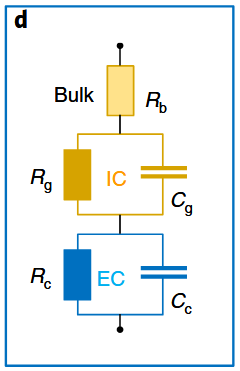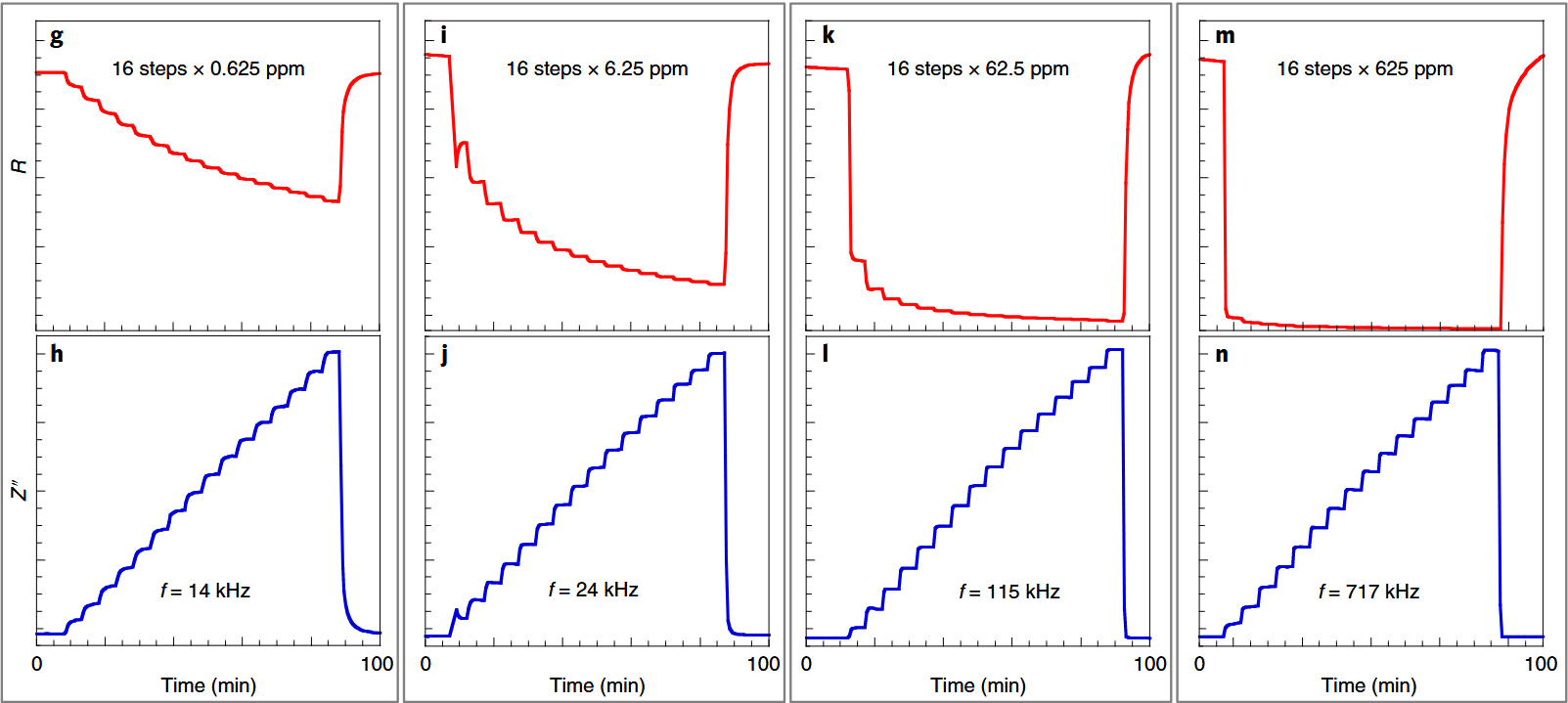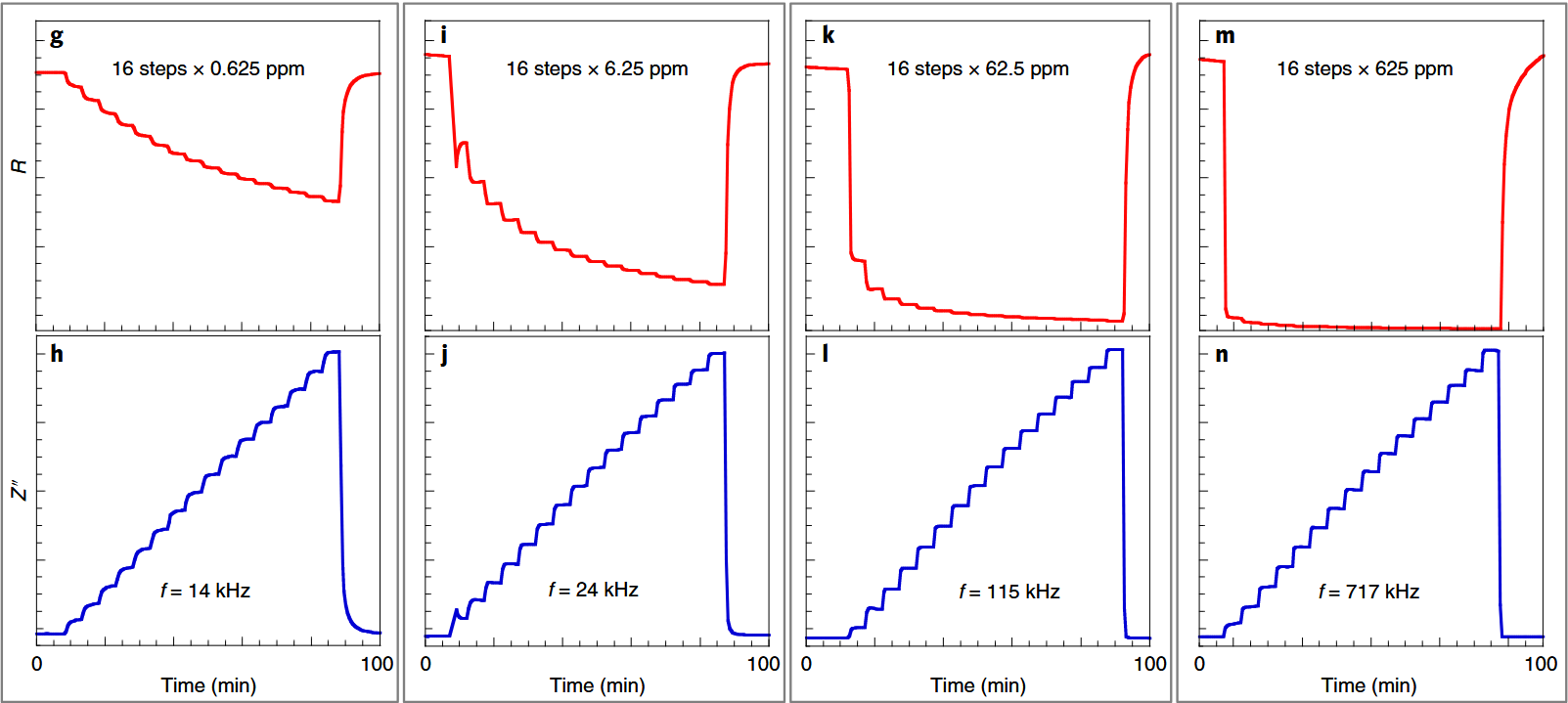202504291345
- Source: [[ @potyrailo2020 Extraordinary performance of semiconducting metal oxide gas sensors using dielectric excitation ]]
- Tags: #gas-sensor #detection #MOX
In order to overcome the Limitations of chemiresistive gas sensors , instead of measuring the resistance, the authors propose to measure the impedance of the sensitive layer.
It is important to keep in mind that there's a fenomenological power-law rule regarding the resistivity of the sensing layer:
Using the following circuit diagram for the sensing measurement (IC: intergranular contacts, EC: electrode/particle contacts)

We can define (not sure where this is coming from):


Interesting to remember: - The sensor used was TGS 2611 - ASIC: AD5933, ADuCM355
Backlinks
These are the other notes that link to this one.
